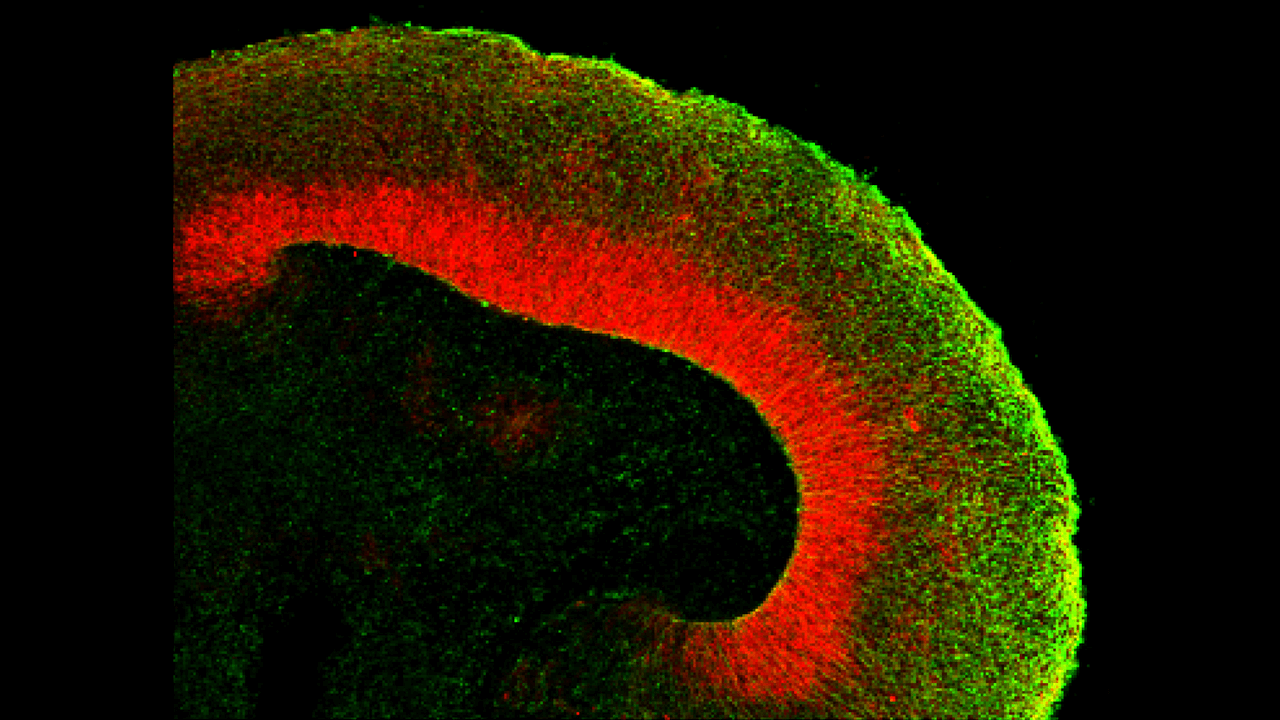Neural Induction and Differentiation of ESCs and iPSCs
Human pluripotent stem cells (hPSCs), including human embryonic stem (ES) cells and induced pluripotent stem (iPS) cells, are self-renewing cells that have the potential to develop into cells of all three germ layers, including the ectoderm. The ectoderm gives rise to the neural tube which includes all cells of the central nervous system including the brain. Since human brain tissue is hard to come by ES and iPS cells hold tremendous potential as a more representative model for studying human neurological development and disease. Being able to generate patient-specific differentiated cells bridges the gap between studies using animal models and clinical research.
We've created these resources to support your hPSC-derived neurological development and disease research, and to give you a window into the exciting research being done by others in the field.
Brains in a Dish: Using Cerebral Organoids to Study Human Brain Development and Disease
What are ãmini-brainsã, and how are they being used to study neurological development and disease? Dr. Oliver Wû¥seke, who works with cerebral organoids as a PostDoc in the Knoblich Lab at IMBA Vienna, gives an overview of the cerebral organoid field and discusses different techniques and results emerging as researchers increasingly adopt cerebral organoid technology to study brain development and disease.
View Now >-
 Neural Induction of hPSCs Using the Monolayer MethodSTEMdiffã Neural Induction Media (NIM) is a serum-free, defined medium optimized for embryoid body formation from hPSCs
Neural Induction of hPSCs Using the Monolayer MethodSTEMdiffã Neural Induction Media (NIM) is a serum-free, defined medium optimized for embryoid body formation from hPSCs -
 Directed Differentiation of Pluripotent Stem CellsStrategies for differentiating ES and iPS cells into ectoderm, endoderm or mesoderm
Directed Differentiation of Pluripotent Stem CellsStrategies for differentiating ES and iPS cells into ectoderm, endoderm or mesoderm -
 Small Molecules, Big Impact in Pluripotent Stem Cell ResearchOverview of signaling pathways and small molecules in pluripotent stem cell research
Small Molecules, Big Impact in Pluripotent Stem Cell ResearchOverview of signaling pathways and small molecules in pluripotent stem cell research -
 Highly Characterized Human iPSCs and NPCs for Downstream Differentiation ApplicationsReproducible research with human induced pluripotent stem cells (iPSCs) depends on access to thoroughly characterized and quality-controlled cell lines. In this webinar, Drs. Andrew Gaffney and Erin Knock will describe the generation of a standardized induced pluripotent stem cell (iPSC) line. Developed with the upcoming ISSCR Standards Initiative characterization guidelines in mind, this highly characterized line is karyotypically stable, demonstrates trilineage differentiation potential, and expresses undifferentiated cell markers. Further, ¤Öêü°å¿ü has developed a highly pure, ready-to-use neural progenitor cell product expressing PAX6 and SOX1 over multiple passages. Dr. Knock will show how these multipotent cells are suitable for customized downstream differentiation to various CNS cell types, such as forebrain neurons, midbrain neurons, and astrocytes. These progenitor cells are the ideal controls for standardizing downstream differentiation protocols, modeling diseases, and developing assays.
Highly Characterized Human iPSCs and NPCs for Downstream Differentiation ApplicationsReproducible research with human induced pluripotent stem cells (iPSCs) depends on access to thoroughly characterized and quality-controlled cell lines. In this webinar, Drs. Andrew Gaffney and Erin Knock will describe the generation of a standardized induced pluripotent stem cell (iPSC) line. Developed with the upcoming ISSCR Standards Initiative characterization guidelines in mind, this highly characterized line is karyotypically stable, demonstrates trilineage differentiation potential, and expresses undifferentiated cell markers. Further, ¤Öêü°å¿ü has developed a highly pure, ready-to-use neural progenitor cell product expressing PAX6 and SOX1 over multiple passages. Dr. Knock will show how these multipotent cells are suitable for customized downstream differentiation to various CNS cell types, such as forebrain neurons, midbrain neurons, and astrocytes. These progenitor cells are the ideal controls for standardizing downstream differentiation protocols, modeling diseases, and developing assays. -
 Neural Induction of hPSCs Using the Embryoid Body MethodSTEMdiffã Neural Induction Medium is a defined, serum-free medium for the efficient & reproducible derivation of neural progenitor cells
Neural Induction of hPSCs Using the Embryoid Body MethodSTEMdiffã Neural Induction Medium is a defined, serum-free medium for the efficient & reproducible derivation of neural progenitor cells








